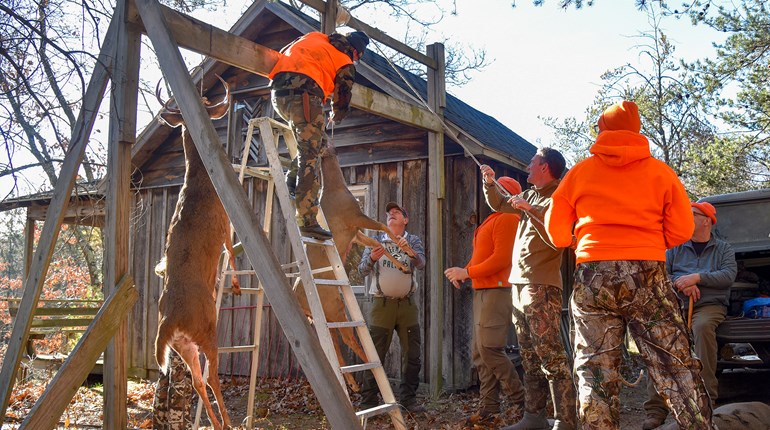
Thanks to the FBI, there was no terror attack in Milwaukee last month.
Twenty-three-year-old Samy Mohamed Hamzeh had planned to travel to Jordan in October 2015 in order to conduct an attack on Israeli soldiers and civilians. Frustrated by “family, financial and logistic reasons,” he turned his murderous gaze toward a more convenient target.
Wisconsin is home to 11,000 Free and Accepted Masons and 180 Masonic lodges. Though not a religion, the Masons, of all people, appeared on Hamzeh’s radar. According to Fox News, Hamzeh hoped to murder 30 Masons, “because these 30 will terrify the world. The (expletive) will know that nobody can play with Muslims.” To be prepared for trouble is not to live in fear; rather, preparation allows us to live without fear.
Fortunately for the Masons, undercover FBI agents intercepted Hamzeh and arrested him after selling him two automatic rifles and a suppressor. Milwaukee residents must have felt relieved at avoiding a recurrence of the 2012 attack on a Sikh temple in the Oak Creek suburb, where a white supremacist murdered six members. After being wounded by police, that attacker shot himself.
On the day after Thanksgiving in the midst of a bitter winter storm, another madman staged an assault on the Colorado Springs offices of Planned Parenthood, killing five in a five-hour gun battle in the building’s parking lot. Taken alive by police, the murderer ranted at his arraignment that he had done it “for the babies.”
Stunned residents of this scenic community at the base of Pikes Peak—America’s Mountain—had just begun to put away the harsh memory of another shooter who, less than 30 days before, had stepped out of his residence (less than five miles from Planned Parenthood) and shot the first person he encountered—a veteran of three tours of the Iraq war on a morning bike ride. The shooter then proceeded down the street to kill two neighborhood women. He was eventually brought down by police officers in a running gun battle that covered several blocks.
And then, of course, there’s San Bernardino. There’s no need to recount the horror of the attack here; the news media already soaked us in the bloody details.
Add to this list the offices of a French satire magazine; a military recruiting office in Tennesee; a movie theater; an elementary school; and a nightclub. New crime scenes are added, yet they never add up. When we come face-to-face with terror, there’s no time to worry if it’s in the form of a religion, or mental illness or just garden-variety criminal violence. The question here is, how can we, as individuals, prepare for threat when threat is so … random?
Maybe the threat is just that simple: Maybe the threat is randomness. It’s far easier to confront threat when you see it coming; it’s surprise that gets us killed.
“Failure of imagination” is a term that entered the public lexicon after 9/11. It describes a state of vulnerability brought on by the inability to conceive of the gravity of the threat one faces. The danger inherent in this syndrome is hinted at by the event that unfortunately popularized its use. On a much smaller scale, it perfectly describes our natural reticence to believe that something awful could happen at work, at lunch … or at the Masonic lodge. Who is the more reasonable man or woman: The one who is prepared to defend life, or the one who points and snickers before returning to his Sunday New York Times?
Among all Americans, those who carry a firearm daily—the sheepdogs of society—are at the head of those who do not suffer from a failure of imagination. On the contrary, they understand that violence is rarely signaled, and danger is amplified by lack of awareness. They expect threat to be random, and prepare for it accordingly.
Those who mock us for such preparations (“What are you afraid of?”) live in the luxury of a failure of imagination. They retreat to the safety of statistics that, correctly, show how unlikely we are to suffer such harm, and cannot conceive that deadly danger could possibly be bothered to penetrate their cocoon of perceived safety. Their common refrain is that they’ve never felt threatened, never pausing to realize that there is no connection between feeling safe and being safe. As a last resort, they veil their refusal to prepare with condescendence: “I refuse to live my life in fear.”
Well, ignorance may be bliss, but “random violence” is a staple of our language for a reason. Violence is random, danger is indiscriminate, and threat, though perhaps rare, is persistent.
Since when did a lack of preparation become a virtue? To be prepared for trouble is not to live in fear; rather, preparation allows us to live without fear. We revere preparation: the Boy Scouts make it their motto. We take rain gear on mountain hikes, we stow flashlights in cars and we buy CO detectors. We invest in retirement accounts. Misfortune’s rarity is no excuse: Do we dump our fire extinguishers just because house fires are less common? Do we stop wearing our seat belts because traffic fatalities are down?
So, what should a sane response to violent insanity look like? Who is the more reasonable man or woman: The one who is prepared to defend life, or the one who points and snickers before returning to his Sunday New York Times?
Collectively, perhaps the sane response looks like record numbers of background checks, rapid growth in Right-to-Carry permits and burgeoning enrollment in firearms training classes. Perhaps Americans know instinctively that, when the wolves arrive, no sheep ever complain about there being too many sheepdogs.


































